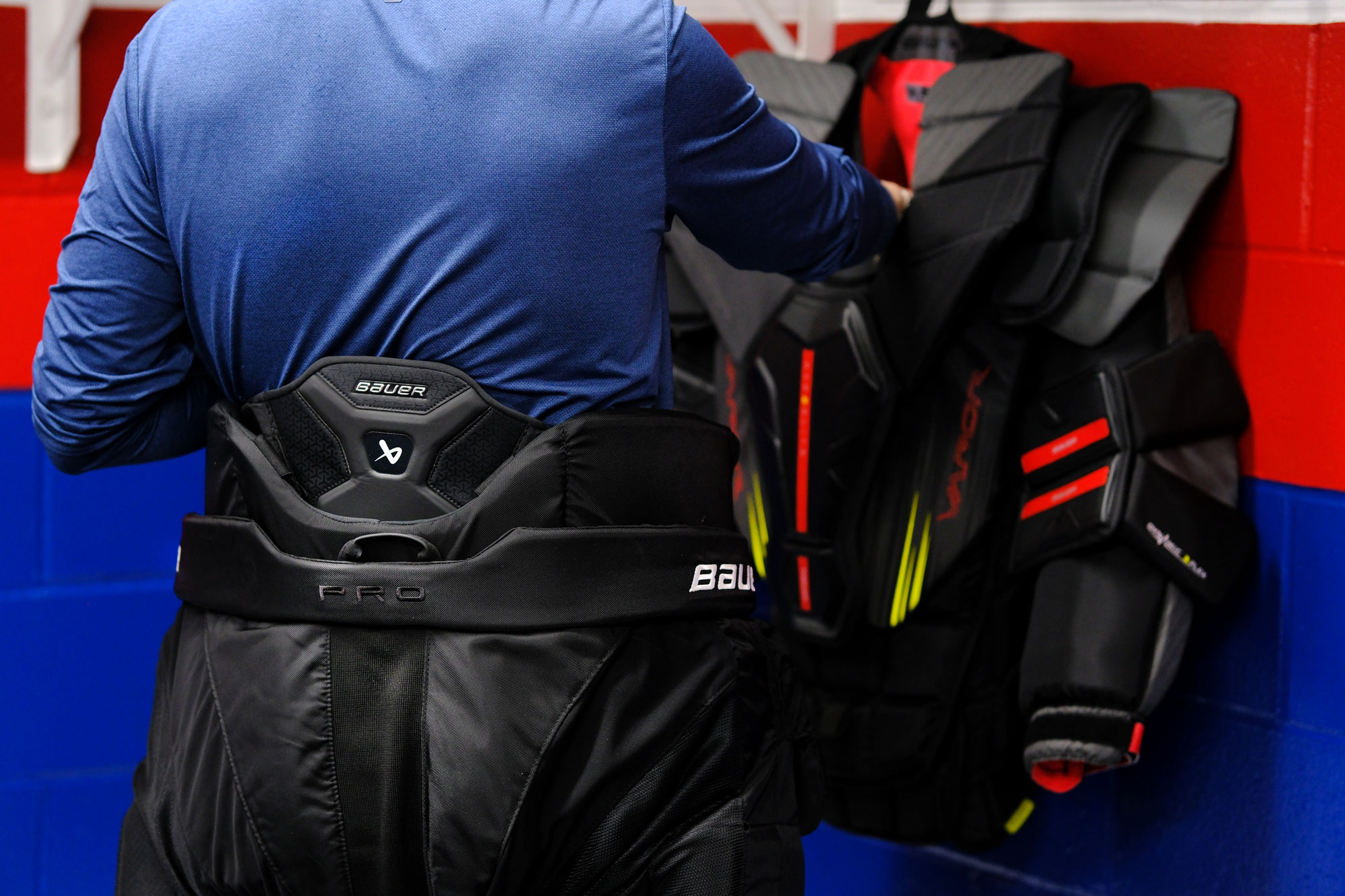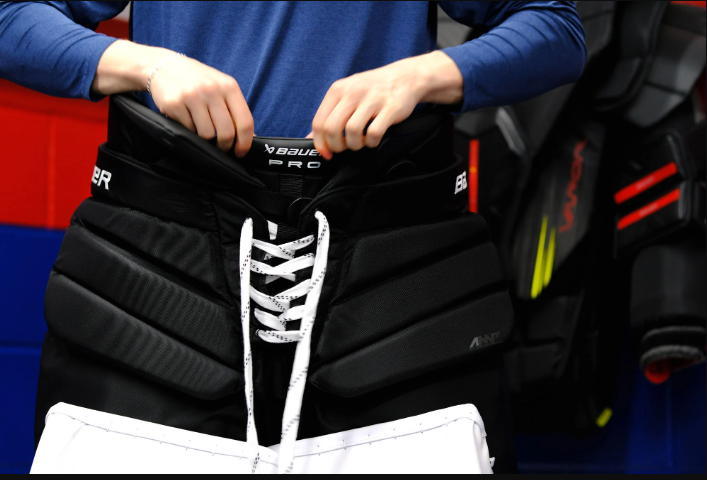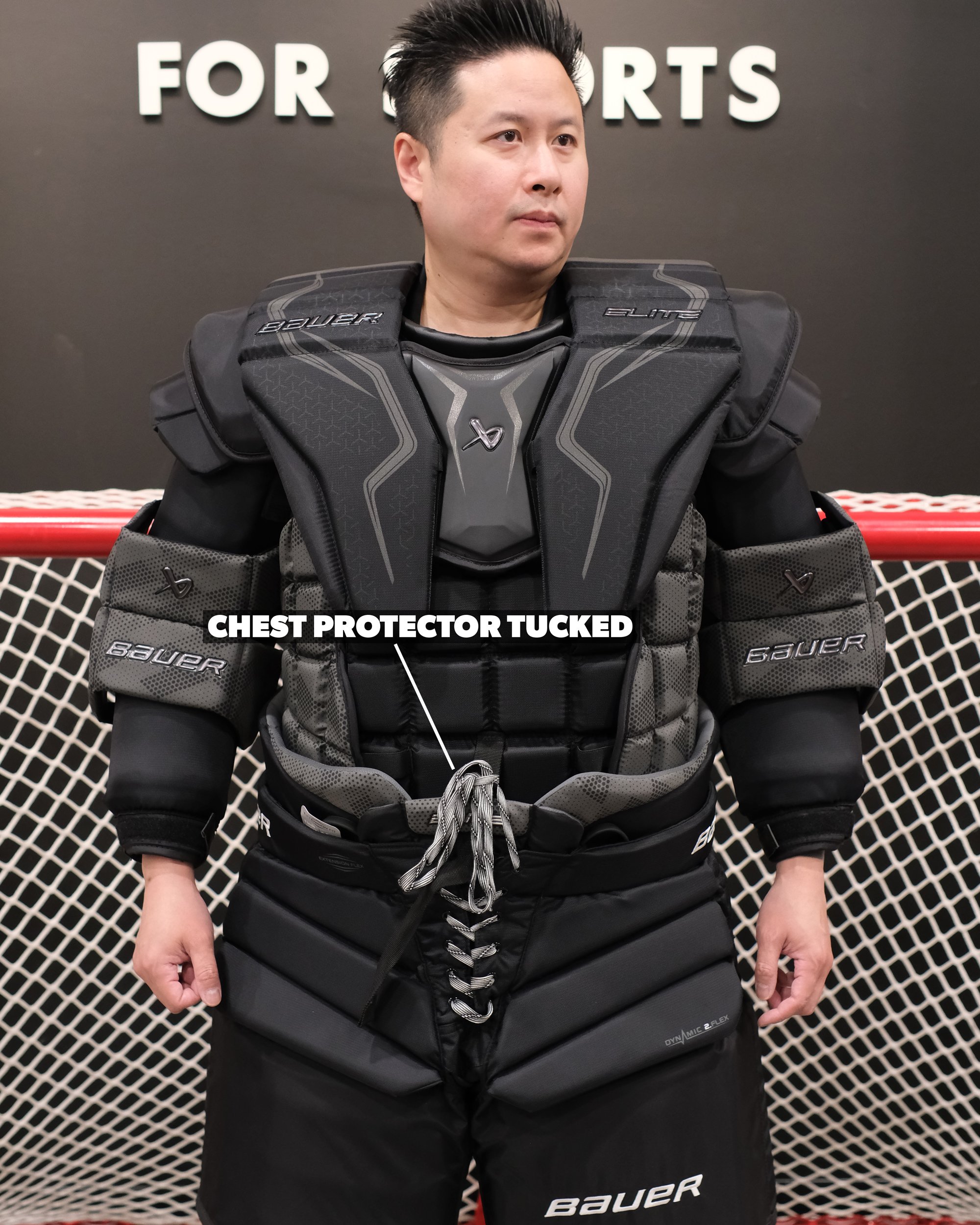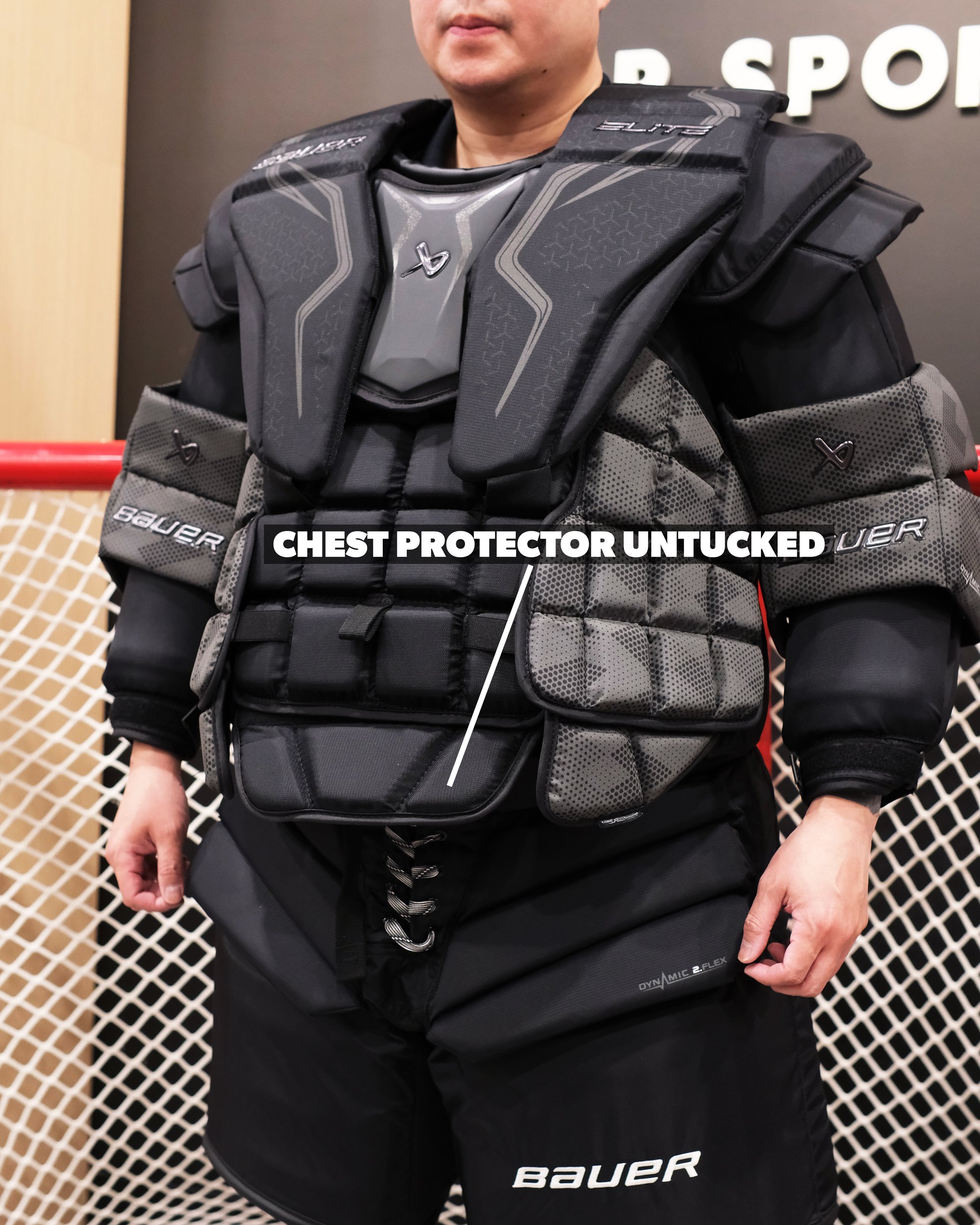The right fit for Goalie PantsUpdated a year ago
 Goalie pants provide much more protection than their player counterparts. They have reinforced hips with high-density foam instead of a thin layer of nylon/elastic. The thighs of a goal pant are usually squared off for coverage purposes and made with thick plastic and foam, while the waist is also beefed up to protect vital organs. Finally, the way the two pants move is even different: player pants are designed to move back and forth while goal pants are more effective for lateral movements.
Goalie pants provide much more protection than their player counterparts. They have reinforced hips with high-density foam instead of a thin layer of nylon/elastic. The thighs of a goal pant are usually squared off for coverage purposes and made with thick plastic and foam, while the waist is also beefed up to protect vital organs. Finally, the way the two pants move is even different: player pants are designed to move back and forth while goal pants are more effective for lateral movements.

Having properly sized goal pants is crucial as they connect the biggest pieces of gear a goaltender wears—their chest/arm and leg pads. This ensures seamless integration for unrestricted movement and prevents the chest protector from riding up.
To determine the right size, you can use the sizing charts listed on any individual goal pant’s product page on our website. You can usually match a waist to a given size, but sometimes companies like Vaughn list an oversized waist. In such cases, you can match your size by adding 8” – 10” to your measured size to effectively use the chart. Matching up waist sizes exactly isn’t always necessary, and it is very common for goalies to wear pants that are wider to increase net coverage, mobility, and comfort.
Unlike player pants, the goalie version isn’t necessarily always worn directly on the waist. It is very common for goaltenders to wear their pants high on the waist (oversized) with suspenders, or so low and loose (undersized) that the leg pads are the only things holding them in place. After deciding which one feels more comfortable for your playing style, it is important that the pant is sized such that they terminate above the kneecap—leaving ample room for the knee wing of the leg pad to rest on the inside edge of the knee.
Another thing to consider is if the goalie wears his/her chest protector tucked into the pant or outside. If you’re the former, a pant with an internal belt, non-tapered waist, and bigger size is going to accommodate the extra bulk from the chest/arm. On the other hand, if you’re wearing the chest protector on the outside, a tapered waist is going to reduce interference and improve feel.


Lastly, it is crucial to ensure that the pant works well with additional knee protection and the leg pads as well. We recommend trying everything on at once to make sure there is limited interference and that there is enough space in the thigh cradle (inside the pant’s leg) for knee protection to reside without overly restricting movement.